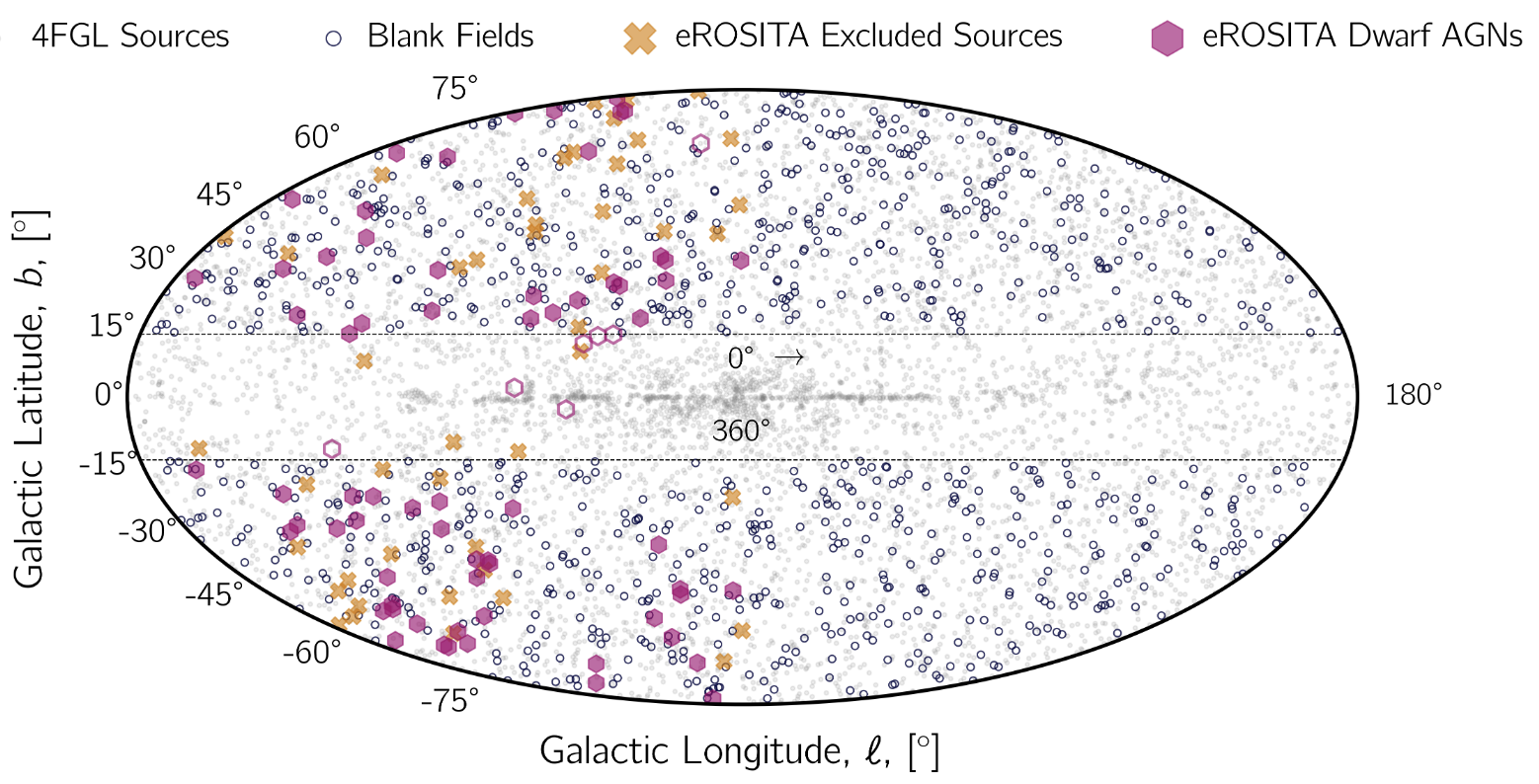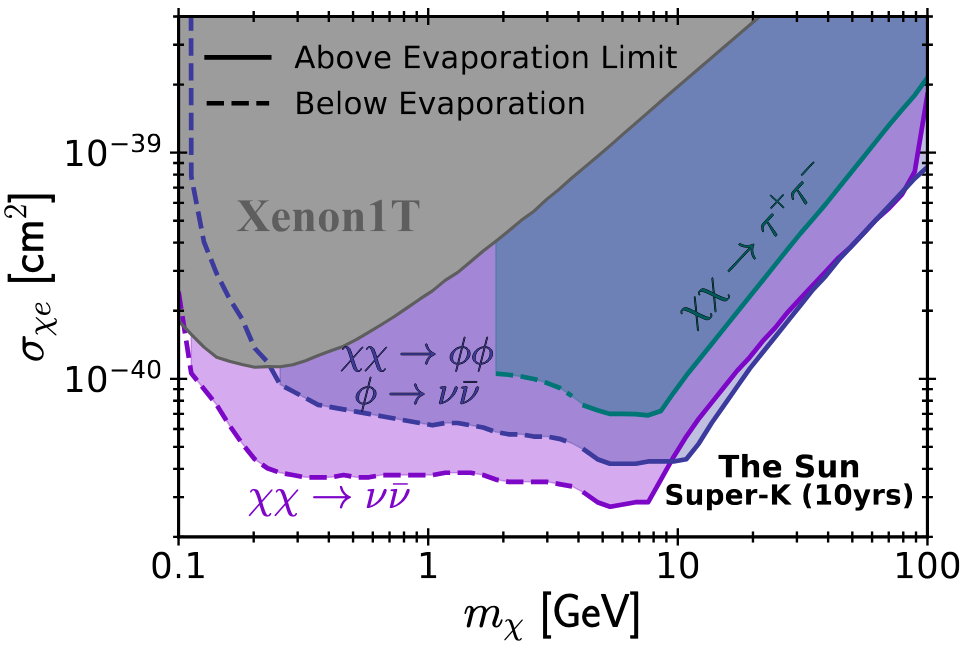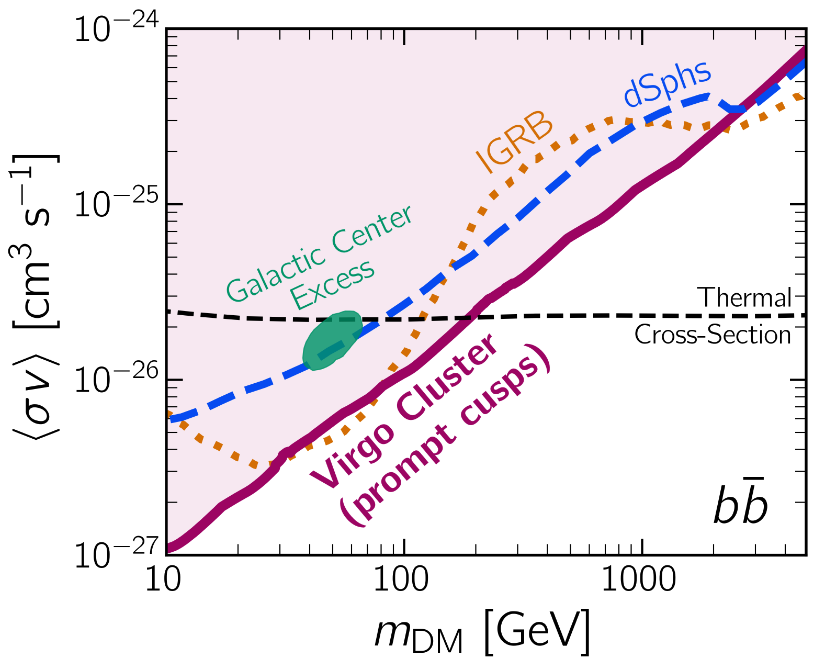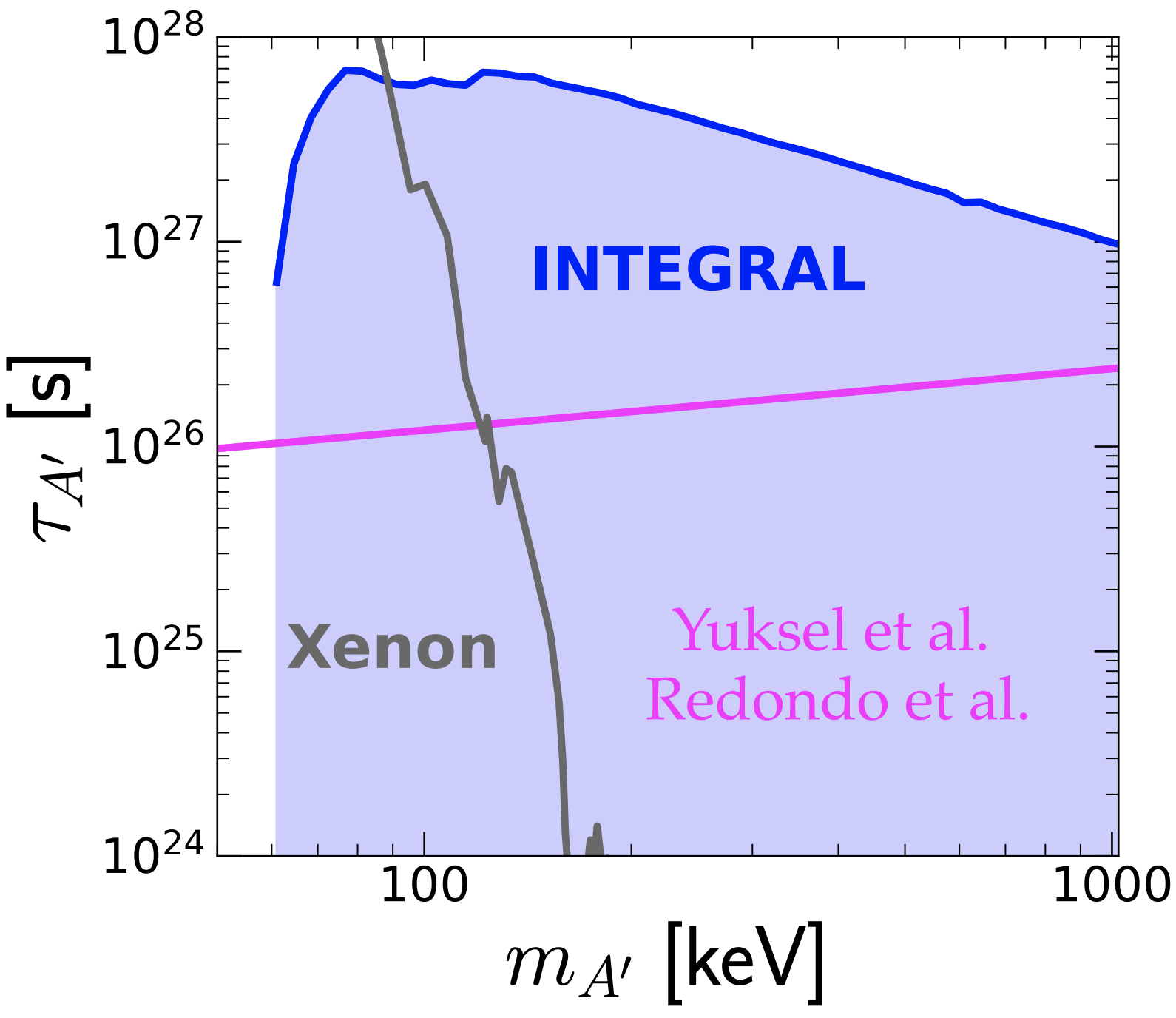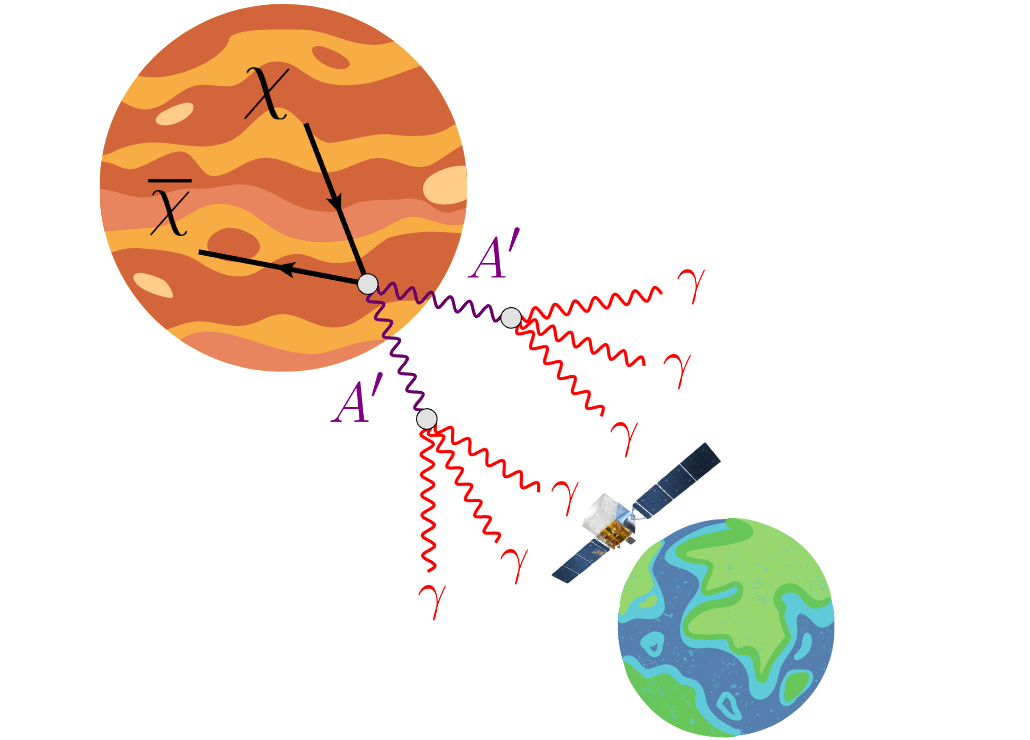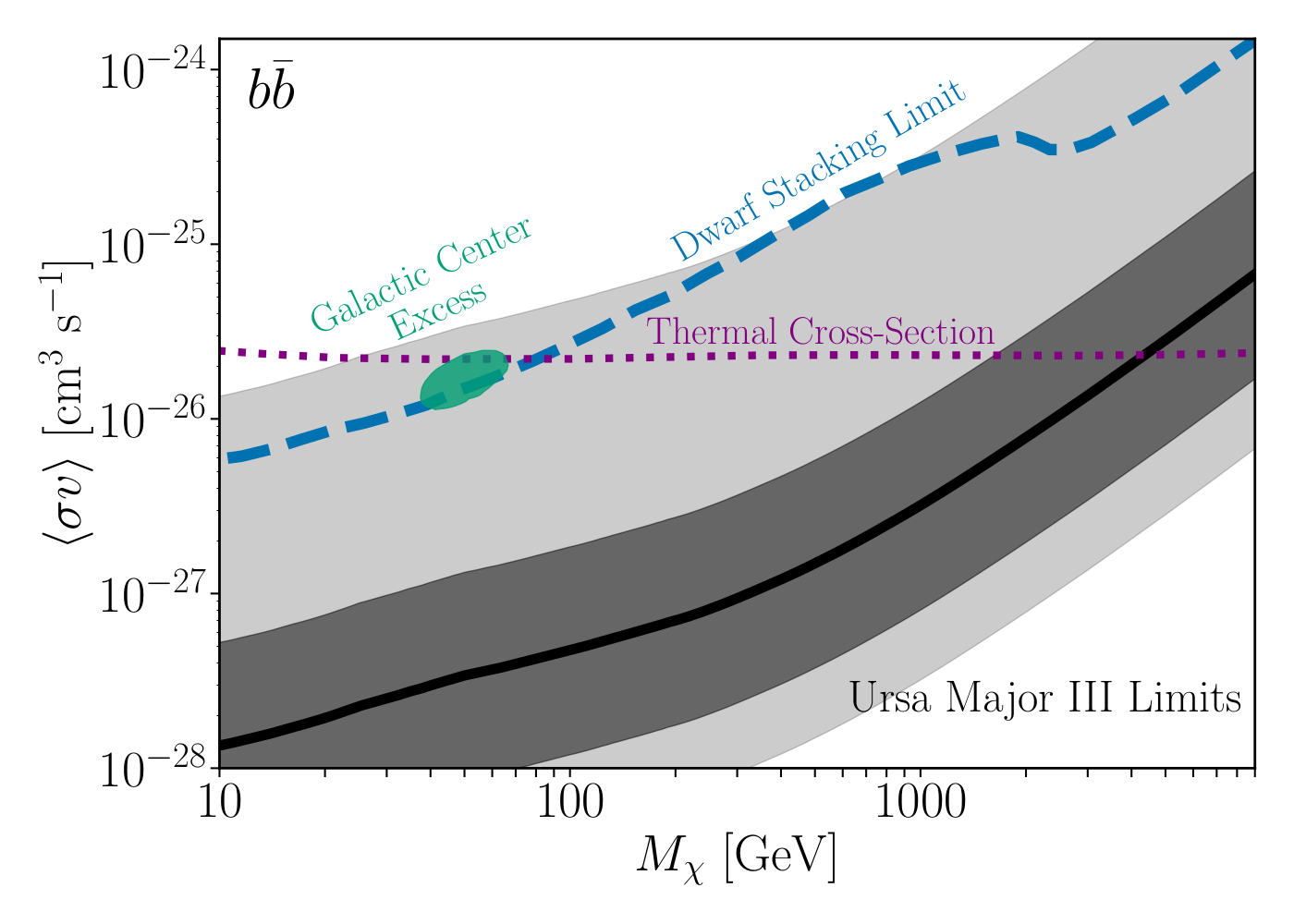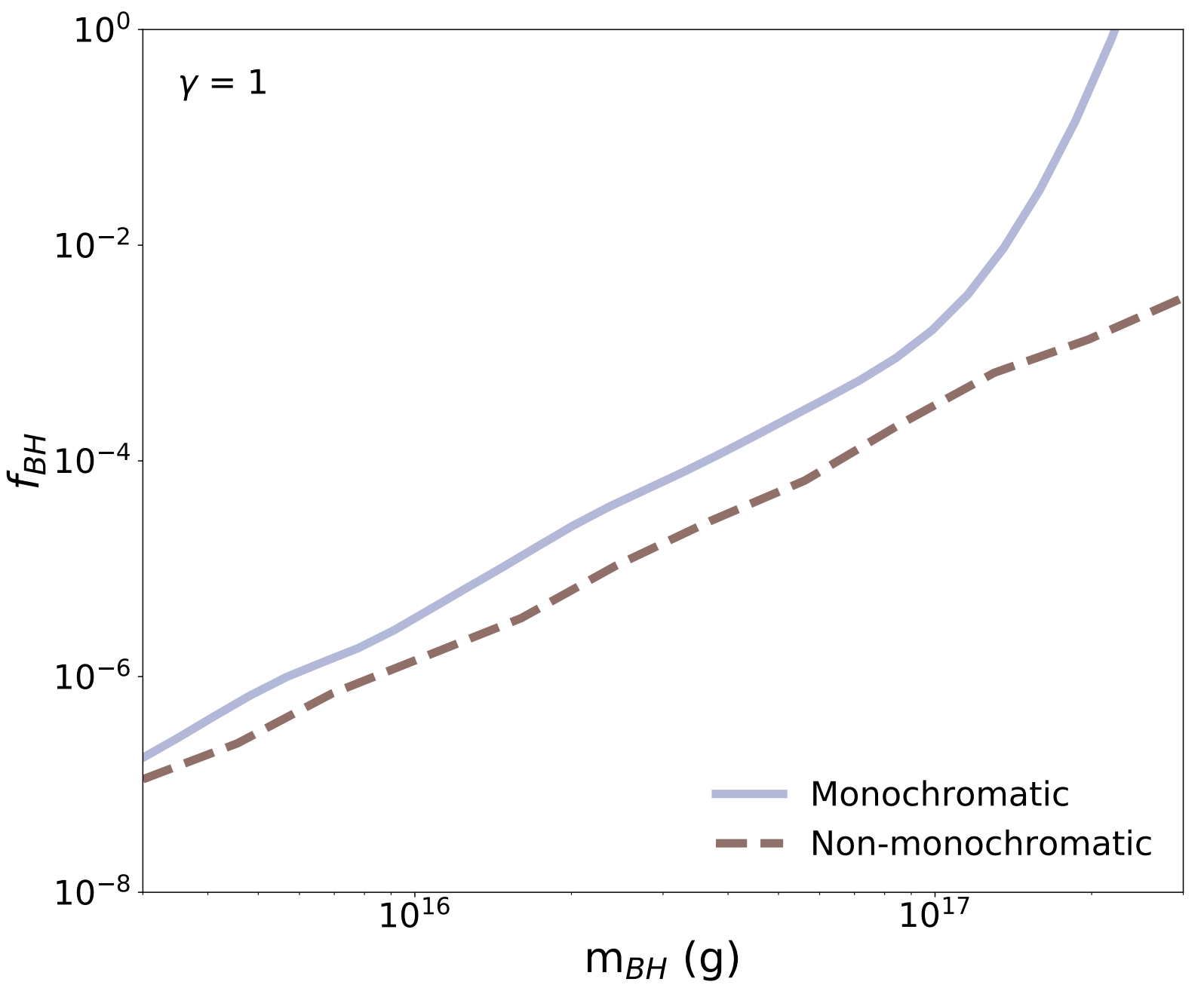19. Are X-Ray Detected Active Galactic Nuclei in Dwarf Galaxies Gamma-Ray Bright?
Milena Crnogorčević, Tim Linden, Annika Peter
To Be Submitted
18. Super-Kamiokande Strongly Constrains Leptophilic Dark Matter Capture in the Sun
Thong Nguyen, Tim Linden, Pierluca Carenza, Axel Widmark
To Be Submitted
17. Gamma-Ray Observations of Galaxy Clusters Strongly Constrain Dark Matter Annihilation in Prompt Cusps
Milena Crnogorčević, Sten Delos, Nadia Kuritzén, Tim Linden
To Be Submitted
16. X-Ray Constraints on Dark Photon Tridents
Tim Linden, Thong Nguyen, Tim Tait
To Be Submitted
15. Indirect Searches for Dark Photon-Photon Tridents in Celestial Objects
Tim Linden, Thong Nguyen, Tim Tait
To Be Submitted
14. Strong Constraints on Dark Matter Annihilation in Ursa Major III/UNIONS 1
Milena Crnogorčević, Tim Linden
Physical Review D 109 8 083018 (2024)
13. The Sensitivity of Future Gamma-Ray Telescopes to Primordial Black Holes
Celeste Keith, Dan Hooper, Tim Linden, Rayne Liu
Physical Review D 106 (2022) 4, 043003
12. First Analysis of Jupiter in Gamma Rays and a New Search for Dark Matter
Rebecca Leane, Tim Linden
Physical Review Letters 131 7 071001
11. A Robust Method for Treating Astrophysical Mismodeling in Dark Matter Annihilation Searches of Dwarf Spheroidal Galaxies
Tim Linden
Physical Review D 043017
10. The Angular Power Spectrum of diffuse gamma-rays measured by Fermi and DM constraints
M. Fornasa, A. Cuoco, J. Zavala, J. Gaskins, M. Sanchez-Conde, G. Gomez-Vargas, E. Komatsu, Tim Linden, F. Prada, F. Zandenel, A. Morselli
Physical Review D 94, 123005
9. Radio Galaxies Dominate the High-Energy Diffuse Gamma-Ray Background
Dan Hooper, Tim Linden, Alejandro Lopez
Journal of Cosmology and Astroparticle Physics 1608 08 019
8. Is the Gamma-Ray Source J2212.5+0703 A Dark Matter Subhalo?
Bridget Bertoni, Dan Hooper, Tim Linden
Journal of Cosmology and Astroparticle Physics 1609 05 049
7. Examining the Fermi-LAT Third Source Catalog in Search of Dark Matter Subhalos
Bridget Bertoni, Dan Hooper, Tim Linden
Journal of Cosmology and Astroparticle Physics 1512 12 035
6. On the Gamma-Ray Emission from Reticulum II and Other Dwarf Galaxies
Dan Hooper, Tim Linden
Journal of Cosmology and Astroparticle Physics 1509 09 016
5. Improving the Sensitivity to Dark Matter Annihilation in Dwarf Spheroidal Galaxies
Eric Carlson, Dan Hooper, Tim Linden
Physical Review D, 91 061302 (2015)
4. Searching for Dark Matter Annihilation in the Smith High-Velocity Cloud
Alex Drlica-Wagner, German Gomez-Vargas, Jack Hewitt, Tim Linden, Luigi Tibaldo
The Astrophysical Journal, 790 24
3. A Clustering Analysis of the 130 GeV Gamma-Ray Feature
Eric Carlson, Tim Linden, Stefano Profumo, Christoph Weniger
Physical Review D, 88 043006
2. Are Lines from Unassociated Gamma-Ray Sources Evidence for Dark Matter Annihilation?
Dan Hooper, Tim Linden
Physical Review D, 86 8 083532
1. Gamma-Rays in the Fermi-LAT Data: Is it a Bubble?
Stefano Profumo, Tim Linden
Journal of Cosmology and Astroparticle Physics, 007 011
